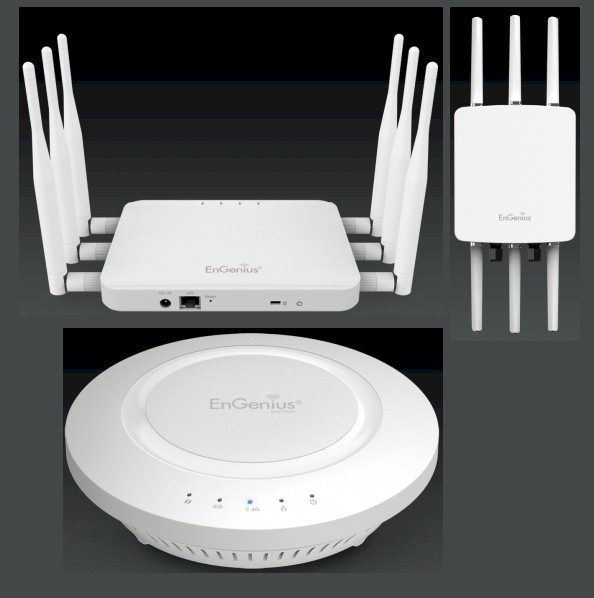 EnGenius has added three 802.11ac access points.
EnGenius has added three 802.11ac access points.
The EAP1750H 802.11ac 3×3 Dual Band Ceiling Mount Access Point/WDS is a smoke-detector style access point with transmit power up to 28 dBm in 2.4 GHz and 26 dBm on 5 GHz.
The ECB1750 802.11ac 3×3 Dual Band High-Powered Access Point/Client Bridge has up to 29 dBm transmit power on both bands and features detachable 2.4 and 5 GHz antennas for easy upgrading.
The ENH1750EXT 802.11ac 3×3 Dual Band Wireless Ruggedized Access Point is enclosed in a water and dust-proof IP68-rated housing and also supports up to 29 dBm transmit power on both bands and has detachable 2.4 and 5 GHz antennas.
All three APs support maximum link rates of 450 Mbps in 2.4 GHz and 1300 Mbps in 5 GHz and feature 2.4 to 5 GHz band steering, fast roaming (for RADIUS-authenticated clients), SSID-to-VLAN tagging for up to eight SSIDs and can be powered by 802.3at power over Ethernet.
Each AP can be used as an access point, client bridge or WDS bridge. The ENH1750EXT also supports AP Mesh mode on 2.4 GHz.

EnGenius ECB1750, ENH1750EXT & EAP1750H (clockwise from upper left)
The EAP1750H is available now for $399, while the ECB1750 will be available" in the July/August timeframe" for $429. The ENH1750EXT will be available next month for $999. All prices are U.S. MSRP.
